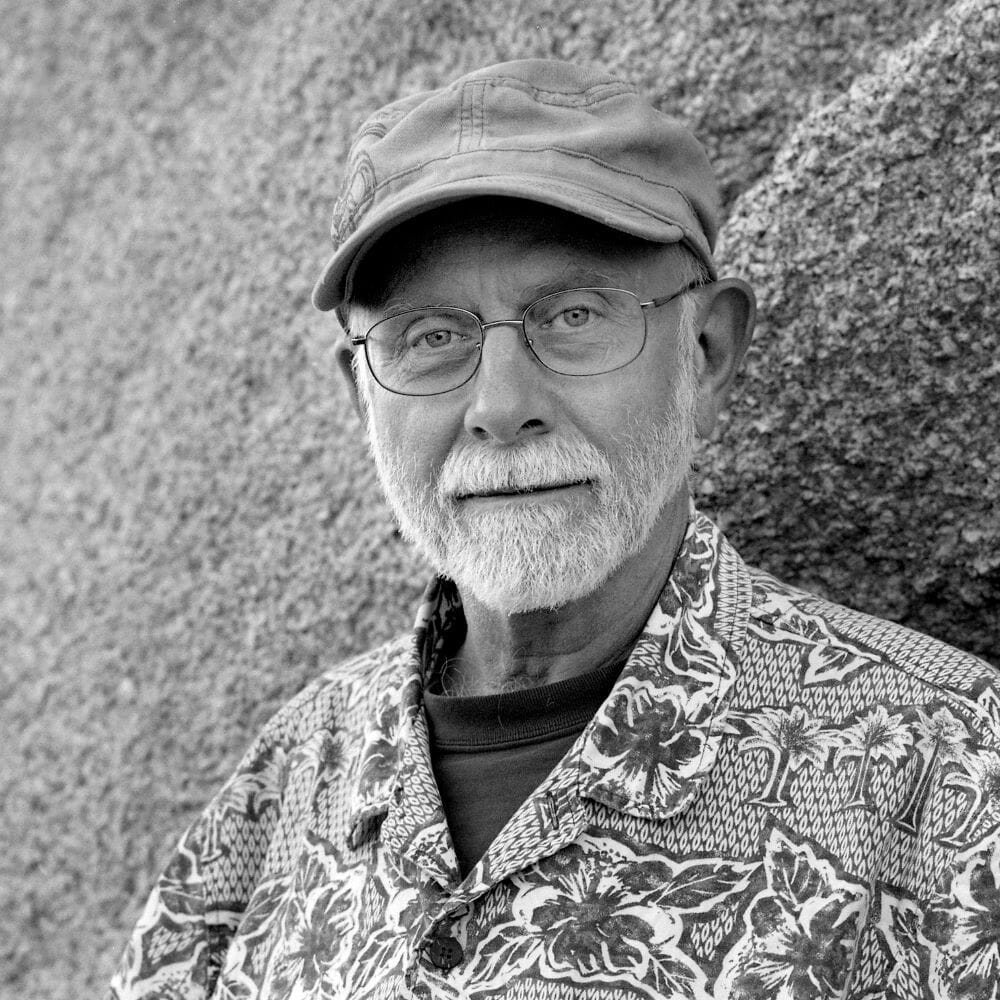Editor's Note: Find more OVID.tv film reviews here.
F11 AND BE THERE opens with a portrait session…Burk Uzzle’s fingers fuss with camera settings, we see the tattooed back of his subject, then a long shot silhouette with his narration—
“You start out with something in mind, an idea, if you’re lucky that translates to the heart and then all of that filters out through the eye….”
Then he’s getting geared up, biking to his studio, doing his yoga, setting up lights for a portrait. He narrates: “How do you become a photographer? …. The first thing you have to know is, who are you, what defines you and your values as a person.…” The subject of his portrait appears, he gives direction. This portrait, and many others documented in this film, was part of a series for an exhibition Perceptions and Recognitions: African Americans of Eastern North Carolina, a project commissioned by the Greenville Museum of Art in 2017. This series of portrait sessions weaves through the film, unifying it and providing context for his narration; Uzzle is the sole narrator, and he brings us into his story seamlessly.
We next see him setting up his darkroom to reprint a photo from the assassination of Reverend Martin Luther King; he shows his contact sheets, which includes images of Jackie Kennedy and Robert Kennedy and wife Ethel. He chokes up. “You could see that he was going to die. And two weeks later I was photographing his funeral.”
Cut to him photographing outside, photographing a highway billboard, Welcome to Harrison. At the bottom, Diversity is a code word for #whitegenocide. This transitions to a Life Magazine assignment of a Klu Klux Klan rally, chilling yet oddly respectful of his subjects, including a devastating portrait of Grand Wizard Robert Shelton. We see that Uzzle brings high craft, a deep sensitivity, and a profound respect for all of his subjects, even those with whom he disagrees.
This OVID.tv Film Also Uses Animation
Uzzle’s early career is shown mostly through animation. He picked up a camera as a kid and was hired as a Life Magazine photographer at 23.
He shows images from Viet Nam and other ravaged areas of the world, but also graphically beautiful abstracts from his early days. Later, he joined the famed photographers’ cooperative Magnum, which gave him more freedom in choosing assignments. We see him touring one of the three museums exhibiting his American Chronicle, showing images from throughout his career. We see him on a year-log road trip. photographing rural America with an 8x10 camera. And we hear him lecturing to art students.
The film’s climax is opening night of his Perceptions and Recognitions: African Americans of Eastern North Carolina at the Greenville Museum of Art, attended by over 700 visitors.
The cinematography is spare, clean. It draws you in and pulls you along, in this writer’s view. The animations add variety, transitions and sometimes a bit of humor. The music deserves special mention—a score with tight choral harmonies, syncopation, a river of sound through a changing landscape.
This is a movie for photographers-both newbies and old pros, looking for inspiration— and for artists of all ilks and lovers of art too. Explorers of the human condition, especially as related to the struggle for civil rights and more— not just acceptance, but also for embrace and celebration, will also likely relish this film.
HIGHLY RECOMMENDED
Nominate this for The Picture This Post BEST OF 2020???
Click Readers' Choice
Vote Securely! Vote Privately! And Make Your Vote Count-- as all voting should be!!
F11 AND BE THERE
A Film by Jethro Waters
Produced by David Raymond
Animation by Cable Hardin
Original Score by Natalie Prass and Eric Slick.
For more information and to watch the film visit the OVID.tv page for F11 and Be There
Click here to read more Picture This Post Review of Top Pick Documentaries and watch this video --
Picture This Post Documentary Reviews RoundUp --Our Top Picks
Images courtesy of OVID.tv and First Run Features

About the Author: Joe Barabe
Joe Barabe shares that he fell in love with photography when he bumped into The Family of Man exhibition catalog, and then studied photography under photojournalist Martin Huss in Mannheim Germany. He then ran a photo center for the US Army’s Recreational Services. Joe Barabe works as a Scientific Photographer and Research Microscopist specializing in art materials and documents analysis (Barabe & Associates LLC) and now is focusing more on promoting his fine art photography, including the remarkable images you see here. and recently launched his photography website to promote his fine art photography. Please Visit Joe Barabe photography website.












